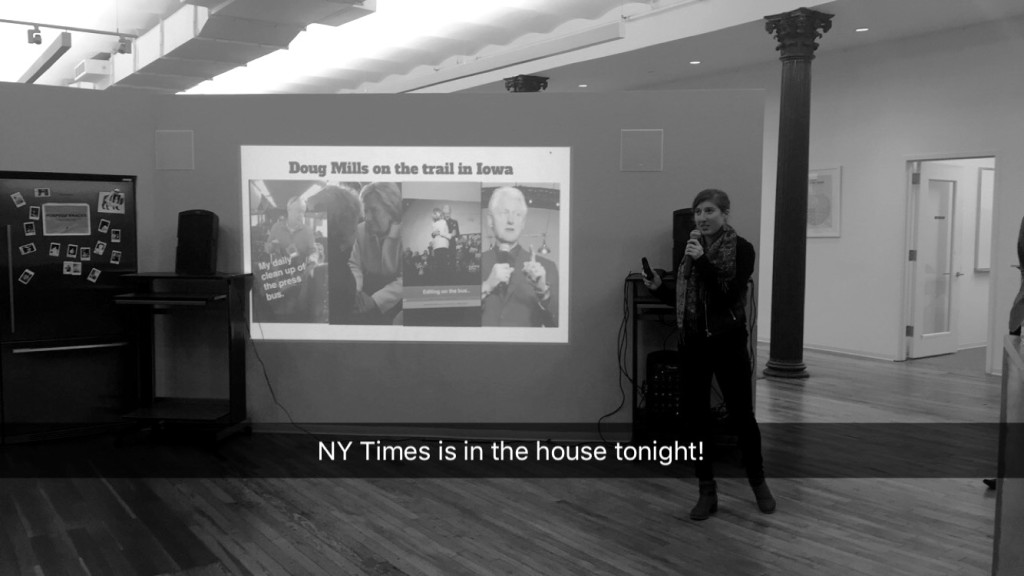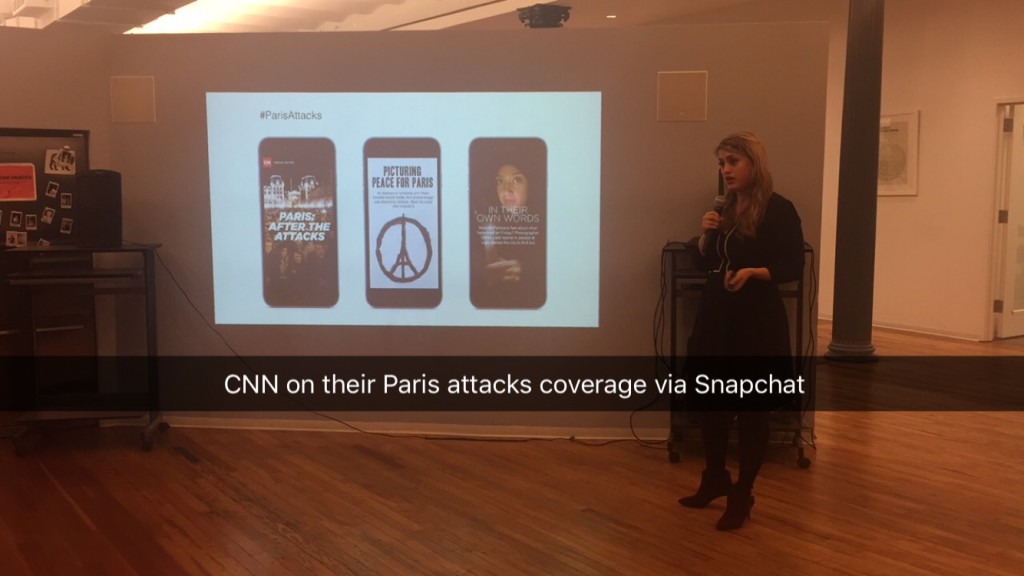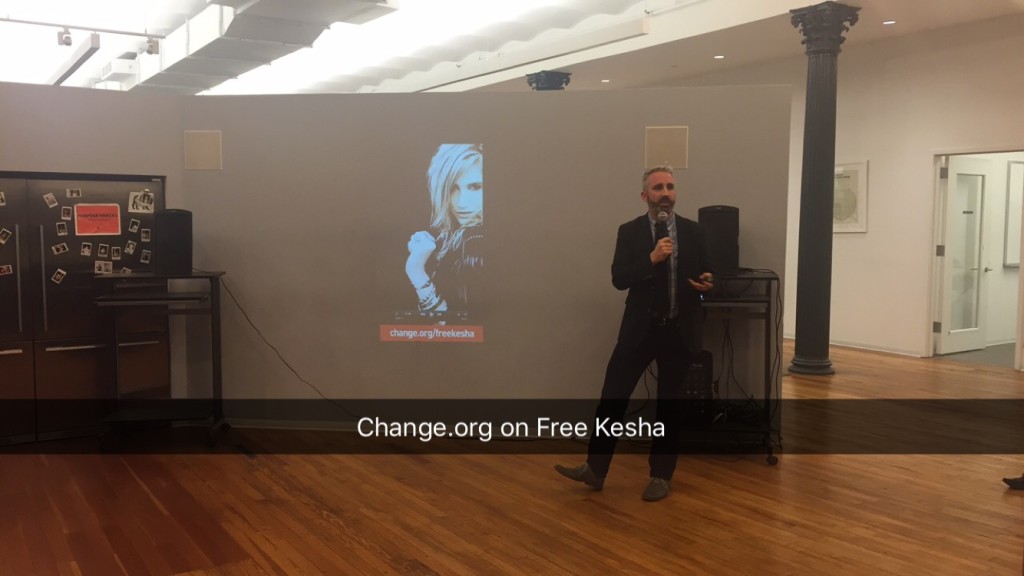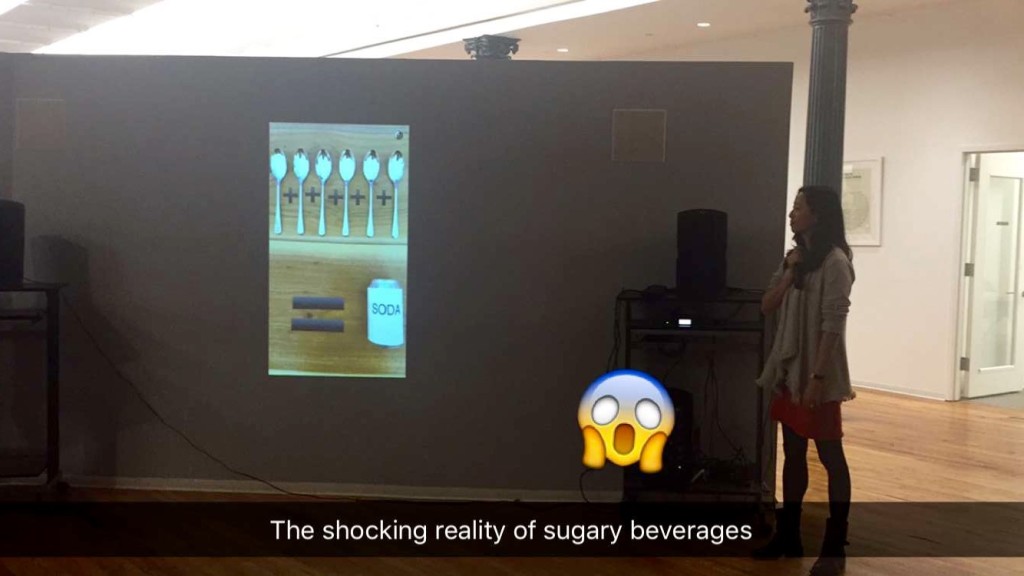Social Media Week 2016 at Purpose
fevereiro 29, 2016
On Wednesday night, we gathered some of the best Snapchattin’, WhatsAppin’, and messaging app content creators in the game for an enlightening discussion in honor of . The event, , highlighted how messaging apps, despite their growing reach and remarkable engagement levels (100M daily active users on Snapchat and 1B monthly active users on WhatsApp), remain largely underutilized by those campaigning for social change. Our speakers included: Eytan Oren, CEO, Block Party; Ivy Li, Tech and Digital, Bloomberg Philanthropies; Michael Jones, Deputy Managing Director for North America, Change.org; Talya Minsberg, Social Strategy Editor, New York Times; Ashley Cordianni, Director of Social Publishing, CNN.Social Media Week 2016The Revolution Will Be Snapped: How Messaging Apps are Changing Social Change
A small number of media outlets, brands, and social change organizations have shown creative brilliance and effective campaigning tactics on these platforms. But in large part, the realm of messaging apps remains an exciting (and somewhat elusive) frontier whose power, and the tactics and mechanics behind how to harness that power, are not yet universally understood. In addition, usability of these apps can be a confusing journey for those of us beyond a certain age or not living with a teenager in the house to show us the ropes.
Our panelists shared helpful insights from their own adventures in messaging apps to help practitioners and organizations overcome some of the main barriers to adoption. Here are some of the key themes and questions that surfaced during the discussion:
Getting Buy-in From Your Organization
Getting buy-in from within an organization to allocate resources towards creating content for Snapchat, WhatsApp, Kik, and other platforms can be difficult. Success is hard to define and measure when it comes to messaging apps so it is difficult to make a strong case to leadership. There is also a steep learning curve when it comes to using the apps and getting audiences to see your content (the process of searching for and finding an individual or brand on Snapchat for example is far from straightforward).
Talya Minsberg offered a great frame for how to gain buy-in within an organization and manage expectations. She shared that the New York Times is framing their efforts on messaging apps as an experiment. They are not diminishing their importance but rather are not trying to rigidly define and measure the results in a traditional way (e.g. assessing how many article views on the website that a particular piece of Snapchat content drove). Instead, they view them as important channels to create content in new ways and reach audiences they never would on other channels.

Super Powers for Good
In order for more activists and organizations to harness the power of messaging apps for good, their unique powers need to be more deeply understood. Ivy Li shared that Bloomberg Philanthropies focuses on messaging apps’ ability to reach audiences that are not on Facebook and other platforms, and in particular younger demographics who could benefit from content on important issues like Bloomberg’s awareness campaign around the amount of sugar in soft drinks. Ashley talked about how CNN is particularly interested in messaging apps as distribution channels for reaching international audiences.

Coming from the front lines of campaigning, Michael pointed out that it is hard to see and measure direct engagement on messaging apps, such as the number of people coming from Snapchat to sign a particular Change.org petition. He feels that the real power they hold is their ability to create awareness, add to the buzz on something that already has a really compelling story, and reach new and younger audiences that might otherwise not engage with a particular campaign or issue. Change.org is not thinking about these apps as a means to build and track an audience. They are instead thinking about how to use them as a campaign tactic or tool. For example, WhatsApp can be used as part of a larger campaign strategy as a tool for petition starters to share their petition or for Change.org to send step-by-step instructions directly to petition starters.
On this topic of messaging apps’ powers for good, Eytan surfaced the fact that 4 or 5 apps already have legitimate payment systems. They have not yet been leveraged to effectively drive donations but this could become an asset for social good in the future.

Be Authentic to Brand + Platform. Don’t Fear the Filter.
An audience member posed an important question about the quality of content on Snapchat. How do brands and publishers used to putting emphasis and resources behind the production quality of their content on other channels approach content development (and control) on Snapchat? Talya shared that the New York times focuses on being authentic to both their own brand and the platform, “Not the old guy but also not a teenager.” They aim to strike that balance by designing content for Snapchat that is meant to be experienced uniquely on Snapchat.
Ivy Li showcased some of the content that Bloomberg Philanthropies posts on Snapchat and it clearly follows suit with this approach. It doesn’t feel over-produced but rather that it was shot and shared directly on Snapchat, giving users the feel that they are interacting directly with a person not a brand. Michael added that “the raw stuff you capture is what really resonates with people.”

Campaigners and brands have only just begun to explore and realize the potential of messaging apps for social good. We hope to continue to convene thought leaders and practitioners to continue this discussion in 2016. Stay tuned for more on this topic soon!
In case you missed it, in the spirt of #SMW2016 we created our own custom Snapchat geofilter for the event:

Um guia digital de combate à desinformação.